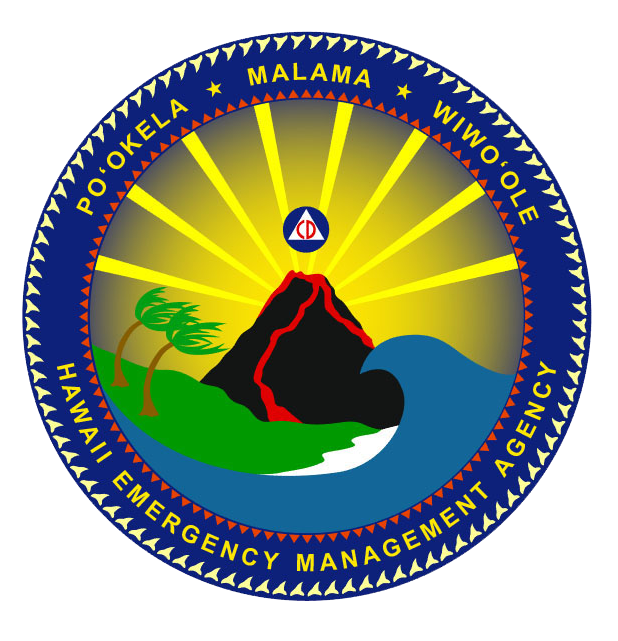FAQs Related to the Ballistic Missile False Alert (Updated 1.31.2018)
Posted on Jan 19, 2018 in Information and News Releases, Nuclear threatFrequently Asked Questions Related to the Ballistic Missile False Alert
What reports have been released so far that are related to the ballistic missile false alert on January 13, 2018?
False Ballistic Missile Alert Investigation for January 13, 2018
https://dod.hawaii.gov/wp-content/uploads/2018/01/report2018-01-29-181149.pdf
Federal Communications Commission Preliminary Report
https://www.fcc.gov/document/presentation-preliminary-report-hawaii-false-emergency-alert
These are the actions that HI-EMA has already taken.
- On the recommendations of the HI-EMA Administrator, Vern Miyagi, the Governor has suspended all future drills until HI-EMA has completed a full analysis of the event.
- HI-EMA has already instituted a two-person activation/verification rule for tests as well as actual missile launch notifications.
- A cancellation command that can be done automatically that can be triggered within seconds of an error, has been put in place.
How does the State emergency notification tie into military notification?
Approximately 5 minutes into the launch sequence, the U.S. Pacific Command will notify the Hawaii State Warning Point (SWP) that a missile is en route from North Korea. The SWP is staffed on a 24-hour, 7 day-a-week basis.
Why didn’t I hear the sirens on Saturday? What if I’m worried about sirens in my area?
The state sirens were not activated because it was a false alarm. Some military bases activated their sirens, which residents living in those areas may have heard. These sirens are controlled separately from the statewide siren system.
The outdoor warning sirens are one part of a three-component emergency notification system. A simultaneous test of the Emergency Alert System is conducted with the siren system, in cooperation with Hawaii’s broadcast industry. In the event of a real emergency, warning sirens and Emergency Alert Broadcasts would be joined by alerts via the Wireless Emergency Alert system, which delivers sound-and-text warnings to mobile telephones and compatible devices. If you don’t have a siren in your area, you will receive an alert by one of these other methods.
On the first working day of every month the statewide outdoor warning sirens are tested. The public can report siren operations issues to their county emergency management and county civil defense agencies.
Hawaii County (808) 935-0031
Maui County (808) 270-7285
City and County of Honolulu (808) 723-8960
Kauai County (808) 241-1800
Although most people received the text alert the audio sirens did not sound, is that a good indication of a false alarm?
In actual event, the sirens would be activated. It’s an indicator, but you should await an official announcement to indicate a false alarm.
If people are in a wooden structure is it better to shelter in place there or attempt to find a concrete building?
It is better to be in a brick or concrete building or other substantial structure. However, if you are in a wooden structure, only seek better shelter if you can reach it within minutes. If you cannot, shelter in place in the middle of the building away from windows. Remember, there will be less than 12 to 15 minutes before missile impact from the time you are notified. The time to identify where you will go is now, not during the event. Please note there are no designated public fallout shelters at this time. Make a list of potential locations near your home, workplace and school, such as basements, tunnels or the windowless area of middle floors in a high-rise building. More details on what you can do: https://www.ready.gov/nuclear-blast
If you’re in a wooden structure besides being in the center what other things should people do to improve survivability?
Each Hawaii resident should have an emergency preparedness kit and emergency plan for all hazards. The state recommends 14 days of food, water, supplies and other necessities (e.g. medications, pet food). Preparedness information is available at https://dod.hawaii.gov/hiema/get-ready/prepare-your-family/.
Why didn’t my cell phone receive the alert message?
We are aware of reports that some people did not receive alerts on their cell phone. We are working with cell carriers to determine why this occurred. We also encourage anyone who did not receive the alert to check and make sure the feature is not turned off on your cell phone.
Where do I go for timely updated information when there is an emergency alert?
The four counties have alert notifications available for your phone. These systems are used to send updates during emergency situations. HI-EMA and the counties also have official social media accounts on such platforms as Facebook and Twitter. Visit https://dod.hawaii.gov/hiema/get-ready/ to get alert sign-up and social media information for your county.
Where do I go for information related to emergency preparedness at public schools?
Links:
HI-EMA “Frequently Asked Questions and Answers, Ballistic Missile Preparedness”
HI-EMA Guidance Summary for Coordinated Public Messaging, Nuclear Detonation
HI-EMA Emergency Preparedness PowerPoint
https://dod.hawaii.gov/hiema/files/2017/11/HI-EMA-PUBLIC-BMP-working-brief-NOV-2017.pdf
FEMA Question and Answer on Nuclear Blast
https://www.ready.gov/nuclear-blast
Press Conference Live Stream: Announcement of Warning Attack System
https://dod.hawaii.gov/hiema/category/news-release/page/2/
Resources:
Crisis Line (State of Hawaii, Department of Health Adult Mental Health Division)
For individuals who are facing emotional crises, and need support, the Crisis Line provides telephone counseling support (“warm line” services) as well as dispatching mobile crisis workers for individuals in the community who are at high risk and need urgent assistance. The phone line is dedicated to helping individuals who are facing crises. On Oahu callers can reach the Crisis Line by dialing 832-3100. Neighbor island residents may call toll free at 1-800-753-6879.
January 18, 2018
Revised January 31, 2018
